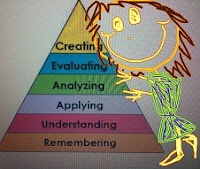Blogging with Students: Internet Safety & Digital Citizenship

We have entered the Edublogs Challenge , and set up a class blog . I am so excited to be part of this 4th grade team-teaching experience! Wordle Today, we are focusing on introducing the students to why we are setting up a class blog, digital citizenship, and Internet safety. Purpose of Our Blog : T he purpose of this blog is to learn the art of writing and lessons of language arts through a real world experience with a real audience. Blogging is more than just reading and writing, it’s about respectfully conversing with others. Through this project, students will practice the responsibilities of digital citizenship and Internet safety. We then discussed Cyber Citizenship and Internet Safety : We are part of our physical community and our cyber community. What do we mean by that? First, let's define "community." It's where we live, places we go, and people we interact with. It's also the group of people who participate in similar activities...



